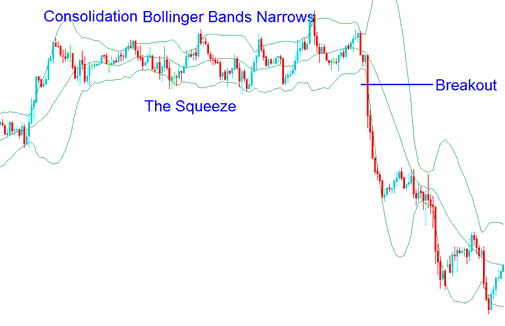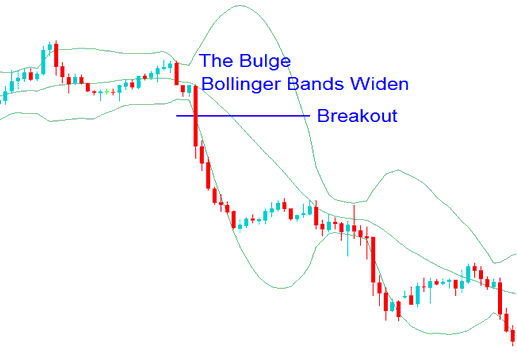Bollinger Band Indicator Bulge & Squeeze Trading Analysis
The Indices Bollinger Band are self adjusting which means the bands widen & narrow depending on price volatility.
Standard deviation measures price swings in stats. It helps set Bollinger bands for indices. Bands widen with big price changes. They narrow when prices stay steady.
- When price volatility is high the Bollinger Bands widen.
- When price volatility is low the Bollinger Band narrows.
The Bollinger Bands Squeeze - How to Trade the Bollinger Bands Squeeze
A narrowing of the Bollinger Band index signals price consolidation, commonly referred to as the Bollinger band squeeze.
When the Bollinger Bands Index indicator displays narrow standard deviations it is mostly a time of price consolidation, and it's a trade signal which there will be a price break-out & it shows Index traders are adjusting their trade positions for a new move. Also, longer the prices stay within the narrow bands the greater the chance of a price breakout.

Bollinger Squeeze - How to Trade Bollinger Bands Squeeze
The Bollinger Bulge - How to Trade Bollinger Band Bulge
The expansion phase of the Bollinger Bands signals an impending price breakout and is termed the Bollinger Band Bulge.
Bollinger Bands that are spaced far apart may indicate that a trend reversal is coming soon. In the Bollinger Bands Index indicator image shown below, Bollinger Bands spread out a lot because prices change a lot during a drop. The trend switches when prices hit an extreme based on statistics and what is considered normal. The "bulge" shows that the trend is shifting to a downtrend.

Bollinger Expansion - Tips for Trading Bollinger Bands Expansion
Explore More Lessons, Tutorials, and Courses:

